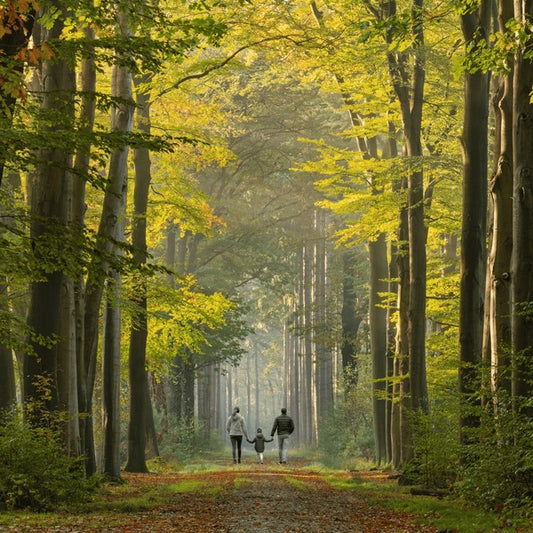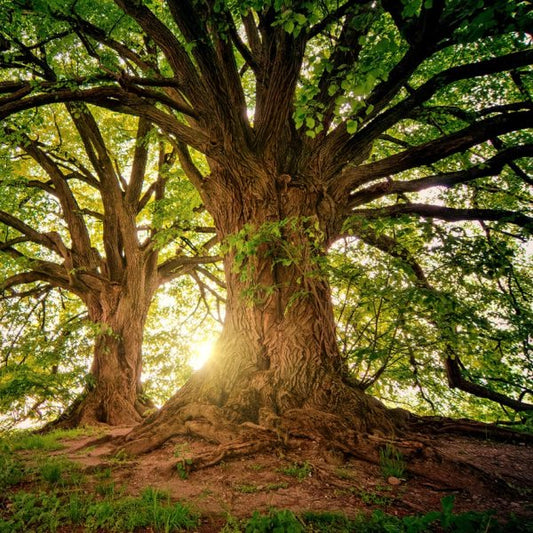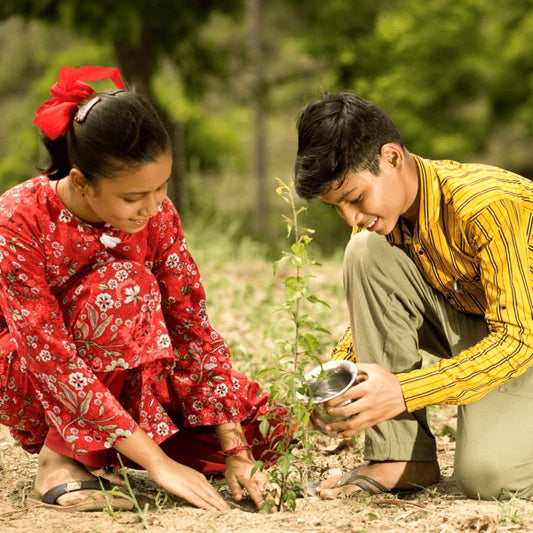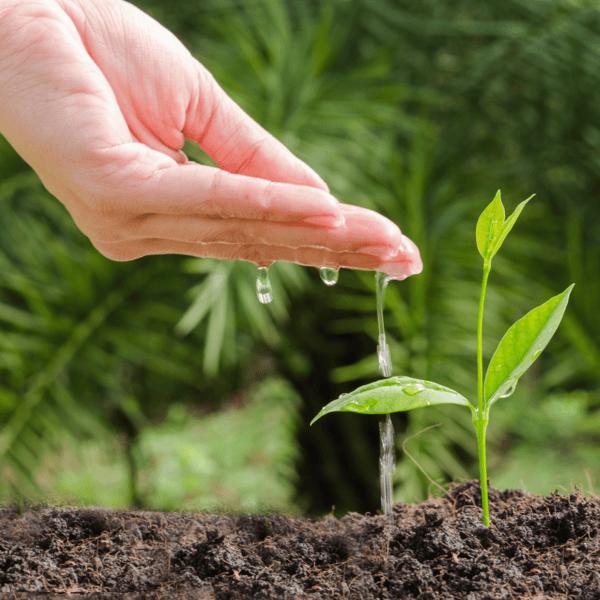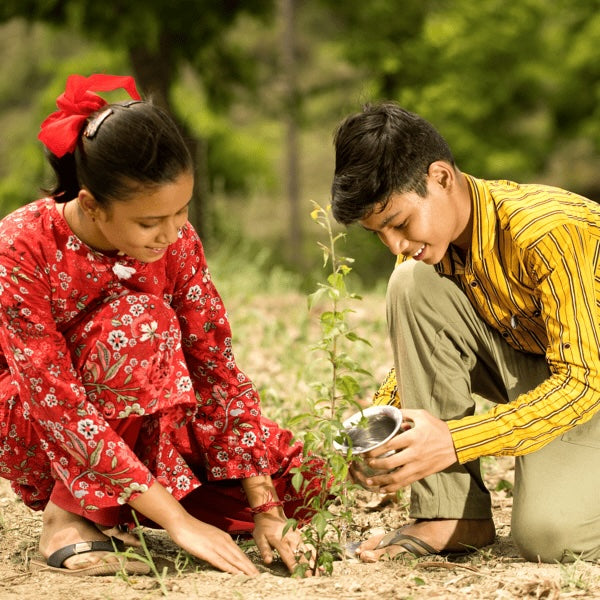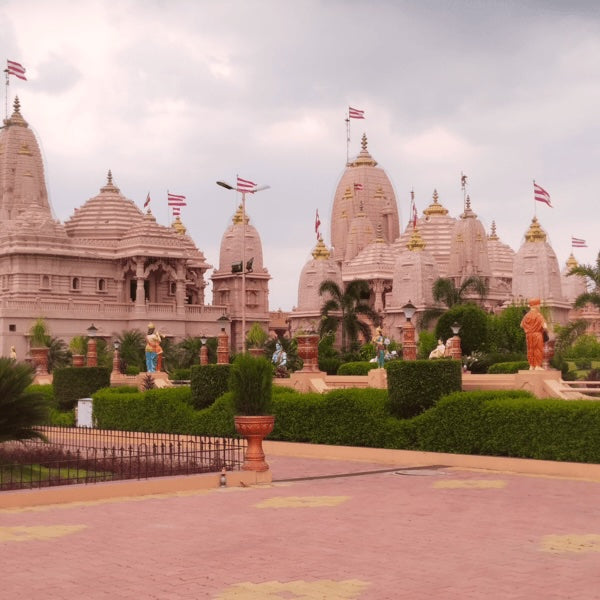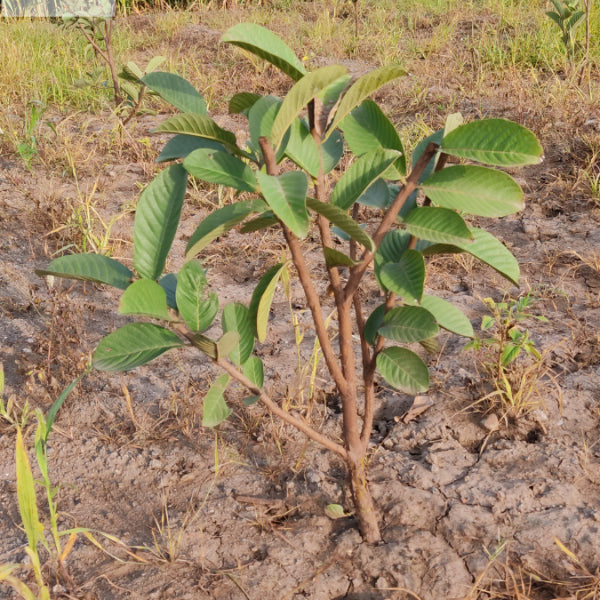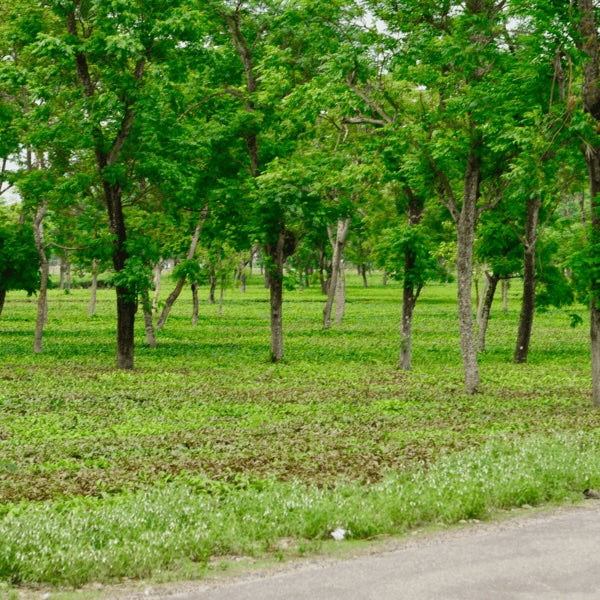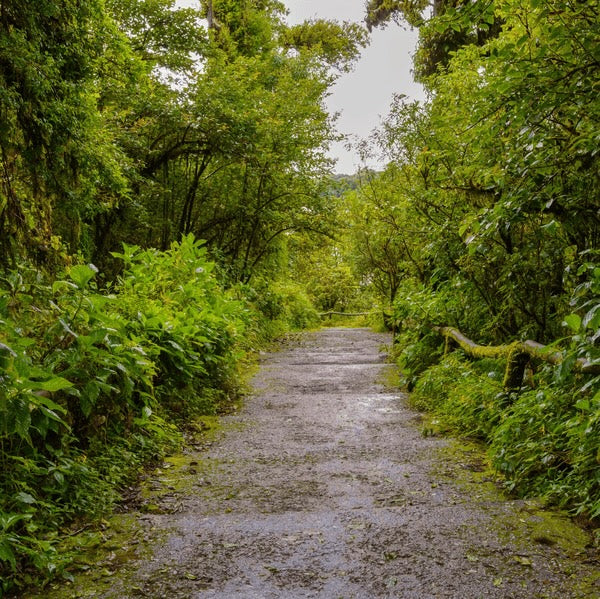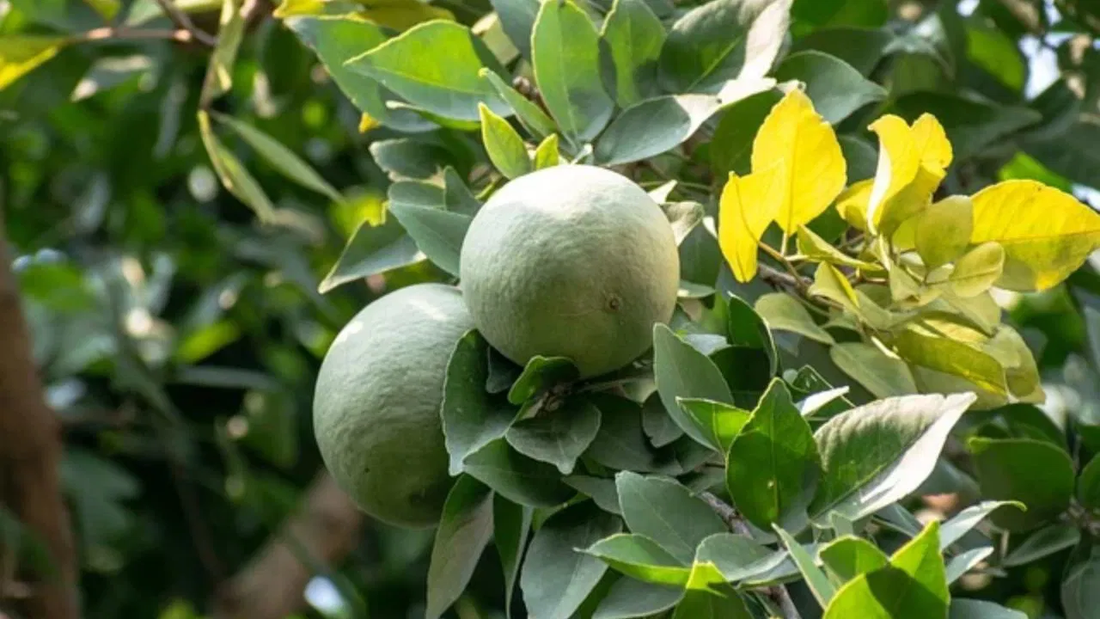

The Bel tree, scientifically known as Aegle marmelos, is revered as the earthly abode of Lord Shiva. Deeply rooted in Indian mythology, this sacred tree is not just a religious symbol but a divine experience for thousands of pilgrims who travel each Read more
Trending
Trees for Corporates
Bel Tree: Shiva’s Sacred Tree with Healing Powers
The Bel tree, scientifically known as Aegle marmelos, is revered as the earthly abode of Lord Shiva. Deeply rooted in Indian mythology, this sacred tree is not just a religious symbol but a divine experience for thousands of pilgrims who travel each year to witness ancient Bel trees at temples and spiritual sites. 🌳🕉️
Mythological Significance of the Bel Tree 🙏
In Hindu scriptures like the Shiva Purana, the Bel tree is described as emerging from the sweat of Goddess Lakshmi and being beloved by Lord Shiva. It is believed that offering Bel leaves to a Shiva Lingam absolves one of all sins and fulfills wishes. The three-lobed leaves represent the holy trinity—Brahma, Vishnu, and Shiva—making it a core element of Shaivite rituals.
According to legends, even the act of sitting under a Bel tree brings divine blessings, and it is said that the tree can cleanse karmic debts when worshipped with true devotion.
Tourist Attractions: Where Pilgrims Visit the Bel Tree 🛕
- Kashi Vishwanath Temple (Varanasi, UP): Ancient Bel trees are found within and around this Jyotirlinga temple. Devotees walk the temple parikrama, stopping to offer leaves from the live Bel trees to the deity.
- Trimbakeshwar (Maharashtra): Tourists and pilgrims trek to the nearby groves to witness centuries-old Bel trees used in temple rituals. Guided spiritual heritage walks are organized, especially during Mahashivratri.
- Bael Forest Trail, Deoghar (Jharkhand): Near the famous Baba Baidyanath Dham, visitors follow nature trails marked by Bel trees, considered spiritually purifying before offering prayers at the Jyotirlinga shrine.
- Kumbh Mela Sites: Temporary temples and spiritual camps during the Kumbh Mela in Haridwar, Prayagraj, and Ujjain often include sacred Bel trees as meditation centers. Tourists receive leaves blessed by sadhus as spiritual souvenirs.
Tour operators now include “tree darshan” and “spiritual botany” experiences, where tourists photograph the Bel leaves, meditate beneath them, and even tie threads on branches as part of wish-fulfillment rituals. 📸
Spiritual Science Behind the Bel Tree 🔬✨
While myth surrounds the Bel tree, science supports its spiritual claims. The volatile oils and phytonutrients in its leaves emit mild antimicrobial properties, contributing to a naturally calming atmosphere, which may explain the clarity and focus devotees experience during prayers. Studies in Ayurvedic institutions have validated its antioxidant and adaptogenic effects.
Why the Bel Tree Is Being Preserved 🌱
Many sacred groves across India are protected due to their cultural links to Shiva, and Bel trees are often central to these groves. Cutting down a Bel tree is considered inauspicious, and local village councils impose fines to protect them. Conservation organizations are working with priests to plant Bel trees in temple courtyards and community forests to preserve their lineage.
Grow Billion Trees Initiative & Bel Tree Plantation 🌍
Under the "Grow Billion Trees" initiative, the Bel tree is among the top native species prioritized for temple towns, pilgrim routes, and spiritual eco-tourism sites. Volunteers organize:
- Temple-focused plantation drives with Bel saplings distributed during Mahashivratri.
- Storytelling and meditation sessions under newly planted Bel trees.
- QR-tagging of heritage Bel trees with mythological stories for tourists and school groups.
Such efforts make the Bel tree not just a sacred relic but a living symbol of India's spiritual ecology. 🌿
Conclusion: Why Tourists Seek the Bel Tree 🛤️
Tourists, pilgrims, and nature lovers alike are drawn to the Bel tree not only for its mythological relevance but also for the spiritual serenity it offers. Whether you're meditating under its shade in Varanasi, offering leaves in Deoghar, or capturing its symbolism through a camera lens, the Bel tree connects you to centuries of divine faith and ecological reverence. Let us honor this sacred being by planting and preserving it for the generations to come. 🌳🙏
Join the sacred movement—plant a Bel tree and invite divinity into your life. 💚
You may also like
Corporate Plantations
Bel Tree Benefits
Packed with more magic than your grandma’s secret spice mix, the Bel tree isn’t just sacred—it’s a powerhouse of healing. From aiding digestion to cooling your body in peak summer, this tree is your Ayurvedic BFF. It balances the tridoshas, keeps infections at bay, and even calms your nerves. Basically, it's like a spa retreat packed into a tree. Ancient sages didn’t just sit under it to meditate—they were probably multitasking health rituals while worshipping Shiva. Talk about divine wellness!
Bel Leaves for Worship
Not just any leaf gets to grace Lord Shiva’s shrine, but Bel leaves? They’re VIPs. With their trifoliate structure symbolizing Shiva’s trident, these leaves are believed to attract divine energy like Wi-Fi picks up signals. Offering them during puja isn’t just tradition—it’s spiritual protocol. And hey, the leaves stay fresh for days, probably because even time respects their sacredness. Try skipping them in a Monday ritual and feel the silent disapproval of the cosmos.
Bel Tree in Ayurveda
If Ayurveda were a movie, the Bel tree would be the scene-stealing sidekick that actually solves the plot. Its roots, bark, leaves, and fruit are all over ancient texts, curing everything from tummy troubles to skin woes. It’s cooling, calming, and a total dosha-balancer. Feeling bloated? Got a fever? A skin breakout? Bel’s like, “I got you.” It’s basically India’s OG pharmacy—organic, holistic, and blessed by the gods.
Bel Fruit Uses
Looking like a medieval weapon but acting like a health elixir, Bel fruit is the real underdog of the superfood world. You can turn it into sherbet, juice, or even chutney—each sip or bite brings you closer to Ayurvedic bliss. It’s a natural coolant, a digestive champ, and even good for your skin. Plus, it doesn’t care about trends—it’s been slaying wellness goals since ancient times. Kale who?
Spiritual Significance of Bel Tree
The Bel tree doesn’t just sit there being leafy—it vibrates with spiritual juju. Believed to house Lord Shiva himself, it’s often found outside temples like a divine doorman. Meditating under it is said to bring clarity, peace, and maybe even better karma. Forget manifestation journals—just hang out near this sacred flora and let the good vibes flow. It’s like plugging into nature’s direct hotline to the divine.
Bel Tree and Lord Shiva
Their bromance goes way back. According to mythology, the Bel tree is so close to Shiva that he doesn’t even need a WhatsApp notification—he knows when one’s being worshipped. The trifoliate leaves represent his three eyes and energies. Legend says offering them with devotion can wipe out sins faster than Ctrl+Z. So if you’re planning to impress the destroyer god, skip the flowers—go Bel or go home.
Medicinal Properties of Bel Tree
The Bel tree didn’t get invited to every ancient herbal remedy party for nothing. It’s anti-inflammatory, anti-bacterial, anti-viral—basically anti-anything that’s trying to mess with your body. From ulcers to diabetes, this tree tackles it all with the flair of a natural healer. Even the UN would probably vote it “Most Likely to Save Humanity (Naturally).” Science is just now catching up to what our ancestors always knew—Bel is bae.
How to Grow Bel Tree
your neighbors will think you're super wise and possibly enlightened.
Bel Tree in Indian Culture
This tree has more screen time in Indian rituals than any celebrity at a wedding. From Vedic chants to grandma’s tales, it’s woven into the cultural fabric like turmeric in milk. Every part has a purpose—leaves for puja, fruit for health, shade for sages. It’s the OG multitasker. Think of it as India’s leafy legend that stars in festivals, traditions, and timeless rituals, all without an agent.
Bel Tree Rituals and Traditions
This isn’t your average "light-a-diya-and-go" routine. Worshipping the Bel tree involves detailed steps, chants, and loads of leaves. Devotees bathe the trunk, tie threads, and whisper wishes like it’s a sacred hotline to the gods. Women especially perform rituals under it for marital bliss and fertility. Forget apps and algorithms—this is old-school manifesting backed by centuries of faith and cultural cred.
Bel Tree and Environmental Impact
The Bel tree isn’t just spiritually woke—it’s an eco-warrior too. With air-purifying abilities and deep roots that prevent erosion, it’s basically Mother Nature’s secret weapon. It grows fast, supports biodiversity, and demands little in return. If you're planting for the planet, the Bel tree deserves a prime spot. It’s sacred, sustainable, and surprisingly low-maintenance—like that one friend who actually brings snacks and doesn’t ghost you.
Bel Tree Myths and Legends
The Bel tree has mythological street cred. Legends say it sprouted from goddess Lakshmi’s tears and was later blessed by Lord Shiva himself. Folktales whisper about sages gaining enlightenment under its shade, and even rakshasas giving it a respectful nod. It’s like the Bollywood superstar of sacred flora—every god wants a cameo with it. Worshipping it isn’t just faith—it’s tapping into a saga of cosmic proportions.
FAQ
What is the Bel tree and why is it called Shiva’s favorite?
– The Bel tree, or Aegle marmelos, is a sacred plant in Hinduism, adored by Lord Shiva himself. Its trifoliate leaves symbolize Shiva’s trident, and devotees believe offering them wins his blessings. Basically, it’s the botanical VIP in Shiva’s court—holy, healing, and totally leaf-tastic.
Can the Bel tree really heal or is it just myth?
– Nope, not a myth! The Bel tree is practically nature’s pharmacy. Its leaves, fruits, and bark are used in Ayurveda to treat everything from digestive woes to diabetes. If plants had resumes, Bel would be hired on the spot—science-approved and Shiva-certified.
Why do people offer Bel leaves to Lord Shiva?
– Bel leaves are Shiva’s spiritual snacks. According to scriptures, each leaf cools his cosmic temper and wipes away your sins. Think of it as holy currency—one leaf, countless blessings. Just don’t offer torn leaves unless you’re cool with karma boomerangs.
Where is the Bel tree commonly found in India?
– Bel trees love warm vibes and sacred sites. You’ll spot them near temples, gardens, and even stubbornly growing out of rocky terrain. From Varanasi to Rishikesh, this sacred tree thrives like a spiritual pop star on tour across India.
Can I grow a Bel tree at home for spiritual benefits?
– Absolutely! It’s like having a spiritual security guard in your backyard. Grow it in a sunny spot, water regularly, and boom—you’ve got instant good vibes and Shiva’s blessings on tap. Bonus: the tree’s fruits are deliciously medicinal too.
What are the health benefits of Bel fruit?
– Bel fruit is the superhero smoothie your gut didn’t know it needed. It fights acidity, boosts immunity, and keeps your digestive system happy. Ayurveda swears by it, and your intestines will too. Tastes like earthy jam, heals like a charm.
Is the Bel tree mentioned in ancient Hindu texts?
– Oh yes, it’s got more mentions than a Bollywood star on Twitter. The Skanda Purana, Shiva Purana, and Vedic texts sing its praises like a sacred Spotify playlist. It’s old, gold, and God-approved.
Why is the Bel tree considered sacred in Hinduism?
– It’s not just a tree—it’s divine WiFi connecting you to Shiva. Every part of it, from root to leaf, symbolizes purity and balance. It’s said to house deities, neutralize negative energy, and even bless you with moksha. Not bad for a tree, huh
Can Bel leaves be used for pooja other than for Shiva?
– Technically yes, but it’s like bringing sushi to a pizza party. Other gods won’t mind, but Shiva’s the true fan. If you’re doing a Shiva-specific pooja, nothing hits home like a fresh Bel leaf offering. Think of it as divine targeting.
Is there a special day to worship the Bel tree?
Even better. Worshipping the tree or offering leaves during these days is said to turbocharge your spiritual WiFi signal straight to Mount Kailash.
Can the Bel tree survive in pots or only on land?
– This tree is tougher than it looks. While it loves stretching roots in the ground, it can thrive in large pots with some patience and sunbathing. Just don’t expect bonsai—this tree is all about going big for God and gut health.
Are there any interesting myths or stories about the Bel tree?
Even offering dried leaves pleases Shiva if done with devotion. Basically, it’s the mythological equivalent of a backstage pass to divine blessings.
Most Popular
Connect with us
-
👥 Corporates
If you are looking for:
- 🌲 Tree Plantation Events
- 📊 CSR Projects
📧 corporate@growbilliontrees.com
📞 +91 9699723523
💬 +91 9325931304 WhatsApp (Only)
🕒 Mon - Sat | 10am - 7pm IST
-
🧩 Tree Plantation NGOs
If you are looking for:
- 💰 Financial Assistance
- 🤝 Operational Support
📧 support@growbilliontrees.com
📞 +91 9699723523
💬 +91 9325931304 WhatsApp (Only)
🕒 Mon - Sat | 10am - 7pm IST
-
🌼 Individuals
If you are looking for:
- 👥 Group Tree Plantation Drive
- 🌳 Bulk Tree Plantation
📞 +91 9699723523
💬 +91 9325931304 WhatsApp (Only)
🕒 Mon - Sat | 10am - 7pm IST




